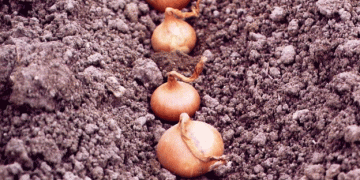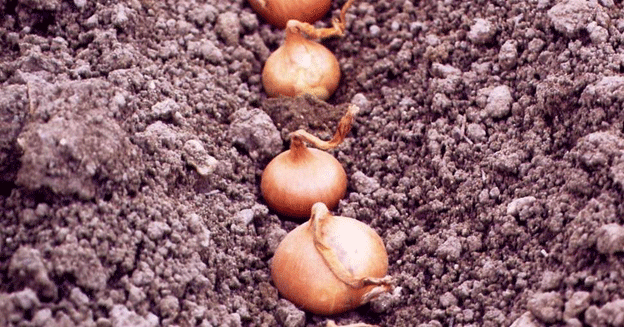Seed onion cultivation, known for its profitability, is one of the most labor-intensive segments of agriculture, especially during bulb planting and turning. In France, where seed onion farming is particularly prevalent, producers are seeking innovative machinery to automate these processes, which are crucial for ensuring the full potential of the crop.
The Labor Challenge in Seed Onion Cultivation
According to Emmanuelle Laurent, head of vegetable seed services at the French National Federation of Seed Multiplying Farmers (FNAMS), two primary methods are currently used to plant seed onion bulbs:
- Simultaneous Distribution and Planting: A planting machine creates a furrow while workers positioned at the back manually place the bulbs. This method requires a significant amount of human labor to ensure the correct positioning of each bulb.
- Separate Distribution and Manual Turning: In this method, a potato distributor spreads the bulbs on the ground. Workers then manually turn each bulb to the correct position, ensuring optimal growth. This technique, while effective, is even more labor-intensive, often requiring 50 hours of labor per hectare. Given the increasing difficulty in recruiting workers, especially for this kind of work, farmers are struggling to maintain productivity.
The labor shortage is critical because improper positioning of the bulbs can significantly reduce yields, impacting the profitability of seed onion crops. This makes the search for delicate yet efficient machinery crucial for the industry’s sustainability.
The Need for Specialized Machinery
To address the labor shortages, farmers are now seeking out new technologies that can automate or at least streamline the bulb positioning process. While traditional machinery exists, there is still no comprehensive solution that can fully replace human labor when it comes to the precise handling of these delicate bulbs. The challenge is to develop machines that can mimic the precision of manual labor while maintaining efficiency at scale.
Research in agricultural mechanization is focusing on improving the sensitivity of planting machines to ensure they can position bulbs without damaging them. Several prototype machines are being tested, though their commercial availability is still limited. Farmers are hopeful that these innovations will reduce the need for manual labor while maintaining the high standards required for seed onion production.
Emerging Solutions in Europe
In the Netherlands, a country known for its advancements in agricultural technology, manufacturers are developing specialized machines designed to handle delicate crops like seed onions. These machines aim to automate the entire planting process, reducing labor costs while ensuring the bulbs are placed in an optimal orientation for growth. French farmers, in collaboration with FNAMS, are closely monitoring these developments, hoping that similar technologies can be adapted for their fields.
Seed onion farming remains one of the most demanding and labor-intensive agricultural sectors, but innovation in mechanization may provide the relief that farmers need. As labor shortages continue to pose challenges, the industry must invest in developing technologies that can delicately and efficiently handle this specialized crop. With research and collaboration between countries, the future of seed onion production may become more automated and less reliant on manual labor, securing its profitability and sustainability.


































